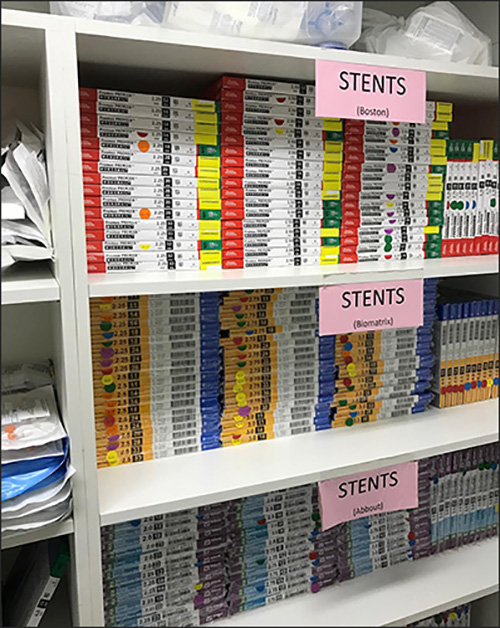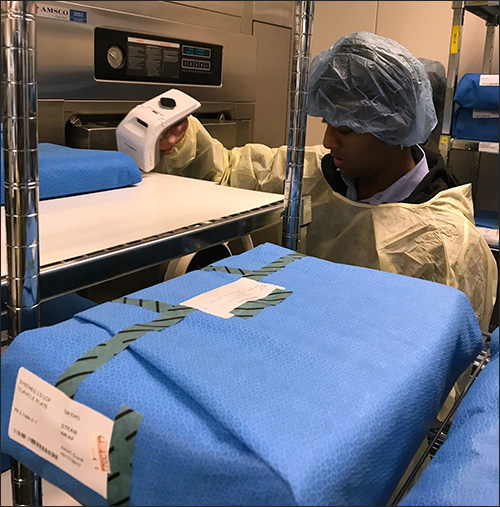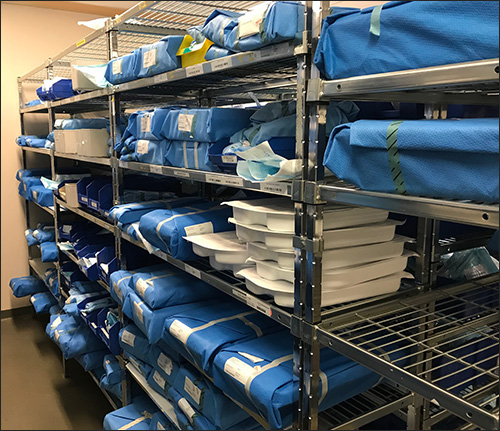Jun 20, 2018Tracking goods and assets within a warehouse or on an assembly floor can be challenging, but when a company's products or equipment leaves the premises, this often becomes exponentially more difficult. Whether a company's products are stocked in stores or at hospitals, or its equipment is employed at oil and gas sites, monitoring them requires a large amount of employee labor. That problem of tracking outdoor or off-premises goods is the target for a solution from RFID4U, known as TagMatiks Field Inventory (FI). The solution helps companies across multiple industries to gain a view into products that are outside of controlled, indoor settings.
Archit Dua, RFID4U's project manager, described the technology at an RFID Journal webinar on June 12 (see Simplifying Field and Consignment Inventory Management With RFID). The TagMatiks FI solution enables the management of inventory in the field, he explained, using Zebra Technologies readers, a smartphone or other mobile device, the TagMatiks app and cloud-based software.

"When you have a lot of inventory, it isn't always inside the four walls," Dua says. Even though such inventory is often outside of a company's physical control, it is still owned by the manufacturer or distributor until it is consumed or sold.
The solution is one part of a larger, modular offering from the Concord, Calif.-based technology firm. TagMatiks, RFID4U's core modular system, includes specific business-case solutions that address such use cases as field inventory, work-in-progress, asset tracking and uniform tracking.
TagMatiks, at its basic level, includes middleware, printer support and RFID device management for UHF RFID systems, Dua says. By offering the solution as a modular model, he adds, the company aims to make a low cost of entry feasible for businesses that want to try the technology before undertaking a large-scale, permanent deployment. The application can start with a single business case, using just a few RFID readers, and then scale up as the use case expands. The platform provides cloud-based data management for Microsoft Windows-based software. as well as for iOS- or Android-based apps.
TagMatiks was released as a software platform 15 years ago, while the FI and cloud-based functionality was offered about four years ago. RFID4U's most common customers for TagMatiks FI have been in health care, Dua says, as well as oil and gas companies that use the system to manage equipment at remote work sites. However, the firm also sells TagMatiks FI for managing assets or inventory in both retail and service environments.
"There's a lack of information that is universal across all these vertical markets," Dua states. It's a cascading effect, he notes, since the cost of the labor collecting the data impacts businesses, even as the task is still not being done as often as it needs to be for accurate inventory data.
In the health-care sector, medical device, implant and pharmaceutical companies are deploying TagMatiks FI to manage the products they store in hospitals for use with patients. For example, DePuy Synthes, of Johnson & Johnson, is using the technology to enable its field sales personnel to more easily manage products at the sites of health-care providers.
"We focused on designing solutions to optimize management of [our] field and consignment inventory," says Steve Pompei, DePuy Synthes' field audit manager. Using the technology with a mobile app, the company was able gain automated field inventory data, manage the replacement of near-expired products, conduct consignment billing and accomplish large-scale product conversions.

The system includes smart enclosures that come with built-in Zebra UHF RFID readers. When a product is removed from the shelf, data is captured in the TagMatiks cloud-based software, and the manufacturer is updated regarding the inventory level. The smart enclosures not only enable the tracking of a product's use, Dua says, but also the date of manufacture and the expiration data, which reduces the risk of expired products being used. Hospital staff members can utilize the app and software to better manage use and replenishments, in order to achieve par levels as well.
In the oil and gas industry, valves, rigs and pipes are used in day-to-day operations but may not be easy to locate across a large outdoor work space. The TagMatiks FI system works with a Zebra handheld that transmits read data via a Bluetooth connection. Personnel in the field can then conduct inventory checks, inspections or maintenance, and not only access data about a particular piece of equipment or tool, but also update that information, such as inputting repair work provided.
Dua cited an example of warranty management for products in the oil and gas industry. In this scenario, users need to be sure that equipment is being used for specific processes, and that it has been properly serviced or certified, or both. This information needs to be available to those in the field, even if they lack Internet access. TagMatiks FI enables that data to be input and then accessed in the field, and to then be stored and analyzed by management.
Retail stores often display and sell goods, ranging from high-end clothing or electronics to basic food items, that belong to a retailer manufacturer. The TagMatiks FI software can identify where such goods are located, as well as when they are or aren't sold. That information can help a company to identify problems, such as bad shelf placement.
Service industries—utility companies, for instance—cover a wide service area, and it's important for technicians who need to access inventory to be able to find it within a wide storage area. The workers can utilize the handheld reader and app on their phone or tablet to locate the tools or inventory they require within a storage yard, and to update each item's status as they move them.
"In today's world, with the mindset of having inventory on demand and being able to provide the highest level of service, inventory needs to be at those locations to get the job done," Dua states. "What it all boils down to is that we need to have the right amount of inventory on hand to get the job done."
Across all verticals, the reading and data-management process is similar. The TagMatiks FI software works with Zebra's RFD8500 and RFD2000 readers. as well as with UHF RFID tags attached to inventory or assets. Once the RFID read data is collected, the software provides notifications based on what is at each location. For instance, users could be alerted that they should pull expired inventory, or move products required at another location. This process can also be used to manage operations such as recalls.
In the meantime, the data is uploaded to the cloud-based server, where a portal allows management to conduct data analysis and reporting. "As we collect data," Dua says, "you have the ability to take that data and put it in a special portal." Users can identify variances, along with the reasons for each variance, and can then take action, such as sending reports to a field manager.
In the end, Dua notes, the system reduces the loss of products, while also cutting labor costs for inventory counts. It enables businesses to focus their personnel on other customer-facing tasks, and the aggregated data allows the companies to build out models for proper inventory levels, or to understand future purchase amounts.
For RFID4U, Dua reports, it all comes down to what can be done with the data. The company has been offering RFID for two decades, and its current focus is on analytics. "That differentiates us from a lot of companies that are still figuring out the nuts and bolts of RFID," he states. Once data is captured from an RFID reader, Dua adds, "Now you have it and the question is 'How can we use it to cut costs, prevent shrinkage and understand inventory levels?'" He predicts that analytics and using the data to improve operations will continue to be an area of growth with the TagMatiks FI solution.



